For insight into the expanding use of the Design-Build process in commercial construction, the Minneapolis/St. Paul Business Journal recently asked three Twin Cities experts for details about the fast-growing method used to deliver construction projects.
Mike Bauer, Founder and CEO of Bauer Design Build (over 40 years in the industry); Branton Smith, President (over 15 years); and Jeff Gears, Architect and Director of Corporate-Commercial Projects at Sperides Reiners Architects Inc., (over 25 years); shared their thoughts on what makes the Design-Build process the preferred method of construction.
Throughout the history of commercial construction projects, clients have traditionally had only one option: Design-Bid-Build. The “Design-Bid-Build” process, proceeds true to its name: First, the design is finalized. Then the project is sent out to bid. Finally, if all goes well, it gets built.
In recent years, however, a concept called “Design-Build” has emerged in the commercial construction industry, one that represents a profound evolution in how some industry professionals view the process of design and construction. Though the Design-Build method has been around for over 5,000 years, back as far as ancient civilization, it has not been widely accepted as a delivery method in the United States. It has been widely used in Europe and other countries but not in the United States. The innovative approach is intended to keep costs in check, customers happy and projects completed on time.
Bauer, Smith and Gears agree one of the defining characteristics of Design-Build construction is the collaborative nature of the process. The absence of competition among participants, they said, ultimately enhances the client experience.
Our conversation with Bauer, Smith and Gears continues below. It has been lightly edited for brevity and clarity.
Let’s start by talking about the Design-Build process. What is it, and why do you all implement it in your professional work?
Branton Smith: Design-Build is a newer accepted approach in the history of construction, and we have always seen a lot of value in it. It allows us to control the cost and scope of a project early in the process. Most people who have gone through a remodel or housing project have a painful story about how prices kept going up during the project or the schedule kept extending. The Design-Build process, for us, is really meant to keep control of that from the beginning and deliver for our customers, from the scope, price and schedule perspectives.
Mike Bauer: The Design-Build process is also highly collaborative. The contractor, project manager, design team, subcontractor(s), and client come together in every meeting; lock-step, arm and arm throughout the entire process, so together they can get real time/instant feedback to ensure everything is on track. We are not designing in a vacuum; we’re designing as a team.
Jeff Gears: BDB truly understands what Design-Build means, which is that they use their skill set and knowledge to help manage a clients’ expectations during the design process, while also proactively working with the architect to ensure the design is viable and within the client’s budget. It’s more than just bidding a project; it’s about collaborating so that smart decisions are being made throughout the design process.
How does the Design-Build process work? And how does it differ from the more traditional Design-Bid-Build process?
Mike Bauer: The way we do the Design-Build process involves eight key steps: It begins with project planning, programming and schematic design and then moves on to design development, construction documentation, construction, project close-out and ongoing maintenance. Ideally, we, as the general contractor are involved at every step of the process, beginning with the very early stages of a project, further demonstrating our Master Builder Mentality.
When we start working with a client, we provide an initial conceptual budget. As we mature the drawings and the scope, we pause to take it out for bid again – and then again as we move into design development to make sure that the scope and timing of the project are still intact. The result is that we don’t get to the end and say, ‘This $2 million project has turned into a $10 million project.’ Instead, we’re sitting in meetings with the designer and the client and giving instant feedback to let them know when what they are asking for is not in the budget. There are no surprises.
That is a big change from the traditional Design-Bid-Build process. In that, you don’t bid your project out until the whole design is done. By then, it may be way over budget, and then the client has to go through the process of redesigning their project, which ends up costing more money and really extends the project out. We are about being 100% transparent with our clients all the way through, so they see everything. We don’t hide any fees, that’s not true with every general contractor. We look ahead to how the building is going to operate, offering options on the performance of the building itself, so the client can make the best informed decisions.
Jeff Gears: Traditional Design-Bid-Build tends to break hearts. You come up with this great drawing only to find out that you can’t afford it.
So, you’ve mentioned scope maintenance, affordability and timing as benefits of the Design-Build process. What else would you add to the list?
Mike Bauer: Typically, the construction speed in the Design-Build process is 12% faster than the Design-Bid-Build process, and overall project delivery speed is between 33% to 34% faster. Part of that is due to the trust and accountability that the process creates. The Design-Build process requires our trade partners to be part of our larger group, which allows for the sharing of ideas across the team and creates a more streamlined project from start to finish. And ultimately, the client is happier.
What does the Design-Build process look like in practice?
Jeff Gears: We worked with one client who was really focused on the design of his project. He wanted to capture as much on paper as possible. But when the pricing came back, it was not favorable. The design included every detail the client thought he needed and wanted, and the project was way out of budget as a result.
We sat down with the client collectively to understand how we could bring this project back to life. We began by listening to what he truly needed, rather than what he wanted. We came back to him with a design that met his budget and his expectations. The client approved, and now, instead of a bunch of papers with lines on them, he has a real building. That’s the truest testament to the Design-Build process. If this client would have gone with the traditional Design-Bid-Build process, the project would have most likely died.
Branton Smith: If it’s done the right way, it’s supposed to be fun to build things. With the Design-Build process we are able to be creative about the client’s needs and separate the wants and say, ‘If it matters to you, here is what it costs. You can make the decision as the client.’ In that case, it really paid off. The budget for the project came down $2.5 million from what was on paper to what was built. The client has been in that building now for four years. And he’s not the only story we have like that: 80% of our business comes from repeat clients and client referrals, which speaks to the power of the Design-Build process.
Learn more about how Bauer Design Build is transforming the construction experience through healthy collaboration.
Bauer Design Build is a commercial general contractor servicing a variety of projects, including industrial, health care, multifamily, senior living, self-storage, retail and office. Sperides Reiners Architects Inc. focuses on senior housing, health care, interior design, sports and wellness, and corporate-commercial projects.
Mary Johnson is a freelance writer with The Business Journals Content Studio.

